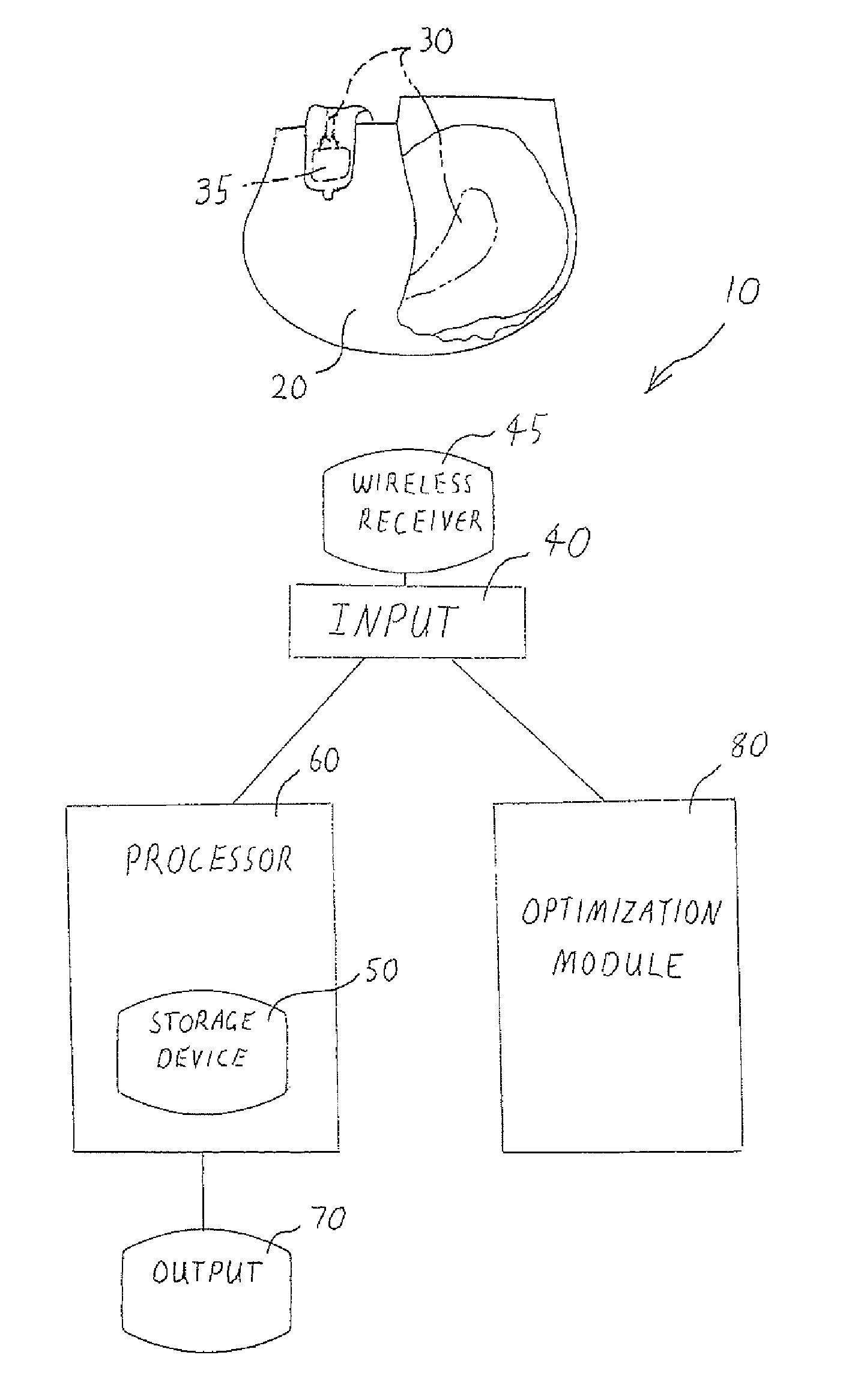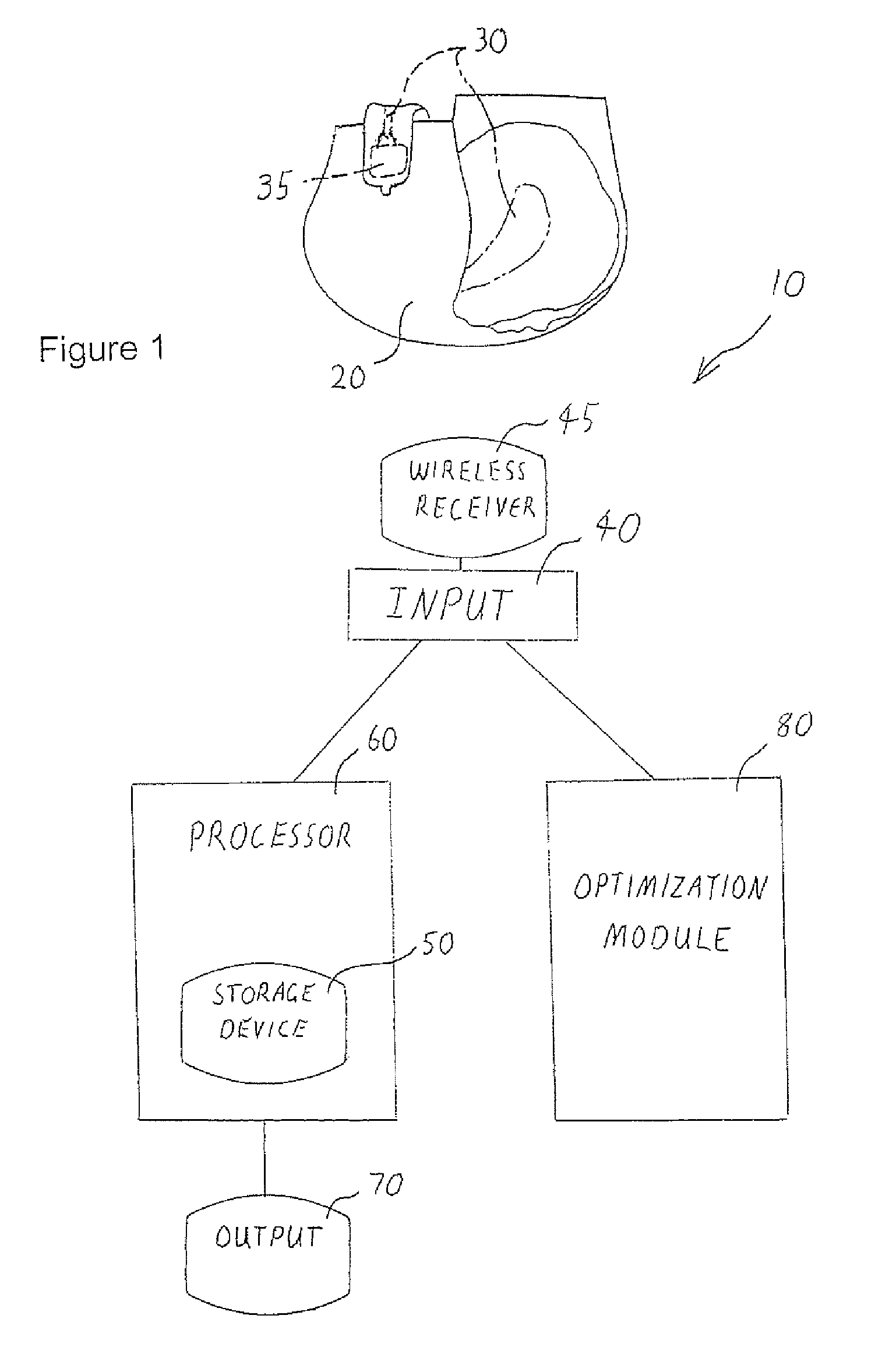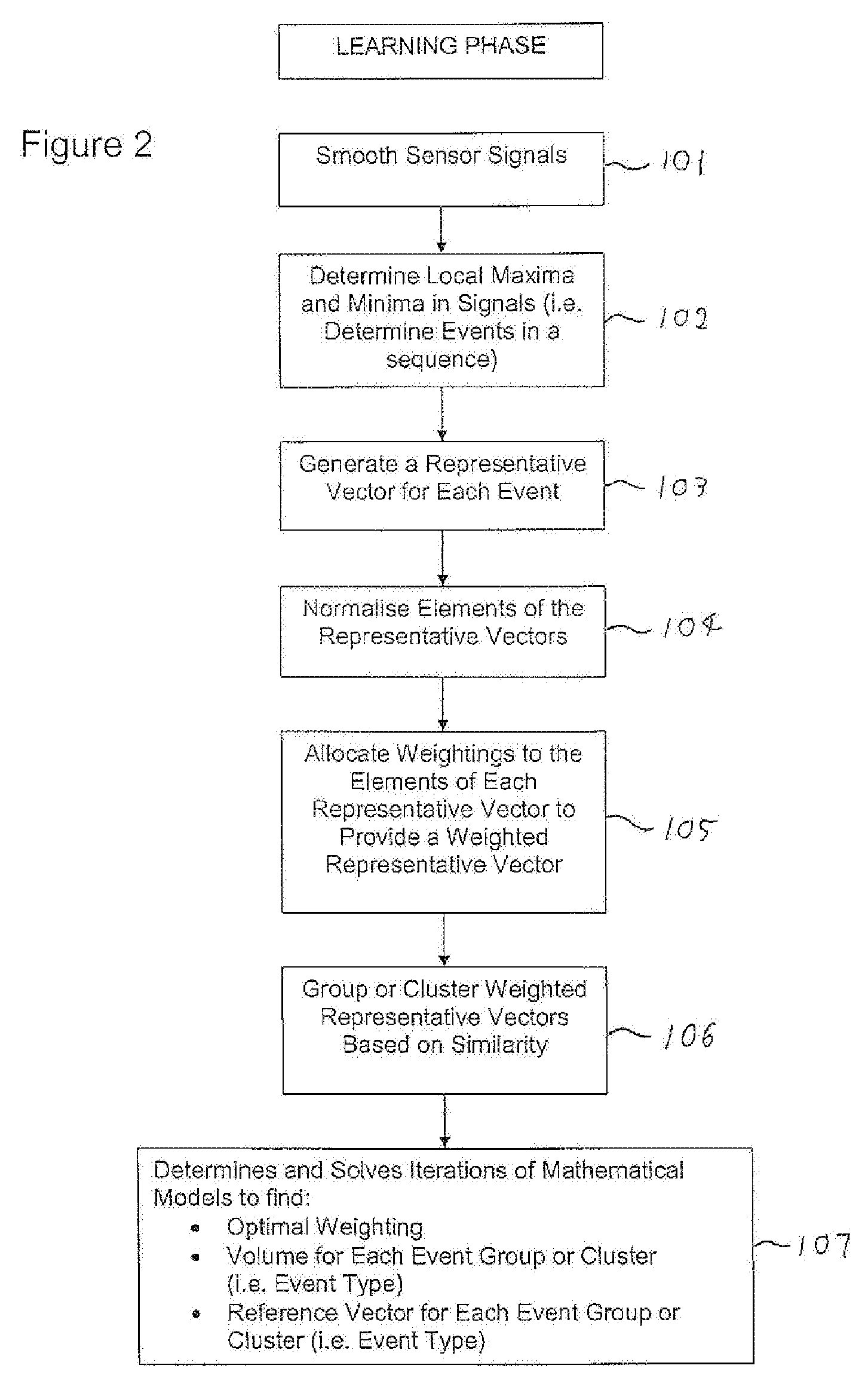Apparatus and method for analysing events from sensor data by optimisation
- Summary
- Abstract
- Description
- Claims
- Application Information
AI Technical Summary
Benefits of technology
Problems solved by technology
Method used
Image
Examples
example
[0208]An example demonstrating how it is envisaged that an embodiment of the invention can be practiced will now be described. This Example describes a portable wireless incontinence monitoring system for aged care facilities. Goals of the system include increasing quality of life for the elderly and reducing the work load of caregivers. In contrast to existing incontinence monitoring systems, the present system does not only detect urinary events but it also estimates the voided volume for each event. For optimizing the parameters of a volume estimation model, genetic algorithms are applied and an objective function is introduced for verification of the obtained volume estimation model.
[0209]In this example, the hardware components of the system comprise a portable wireless transceiver and a strip with an array of sensors placed in a diaper to measure conductivity of urine. The software components includes a database to record raw data and a volume estimation module which reads the...
PUM
 Login to View More
Login to View More Abstract
Description
Claims
Application Information
 Login to View More
Login to View More - R&D
- Intellectual Property
- Life Sciences
- Materials
- Tech Scout
- Unparalleled Data Quality
- Higher Quality Content
- 60% Fewer Hallucinations
Browse by: Latest US Patents, China's latest patents, Technical Efficacy Thesaurus, Application Domain, Technology Topic, Popular Technical Reports.
© 2025 PatSnap. All rights reserved.Legal|Privacy policy|Modern Slavery Act Transparency Statement|Sitemap|About US| Contact US: help@patsnap.com



